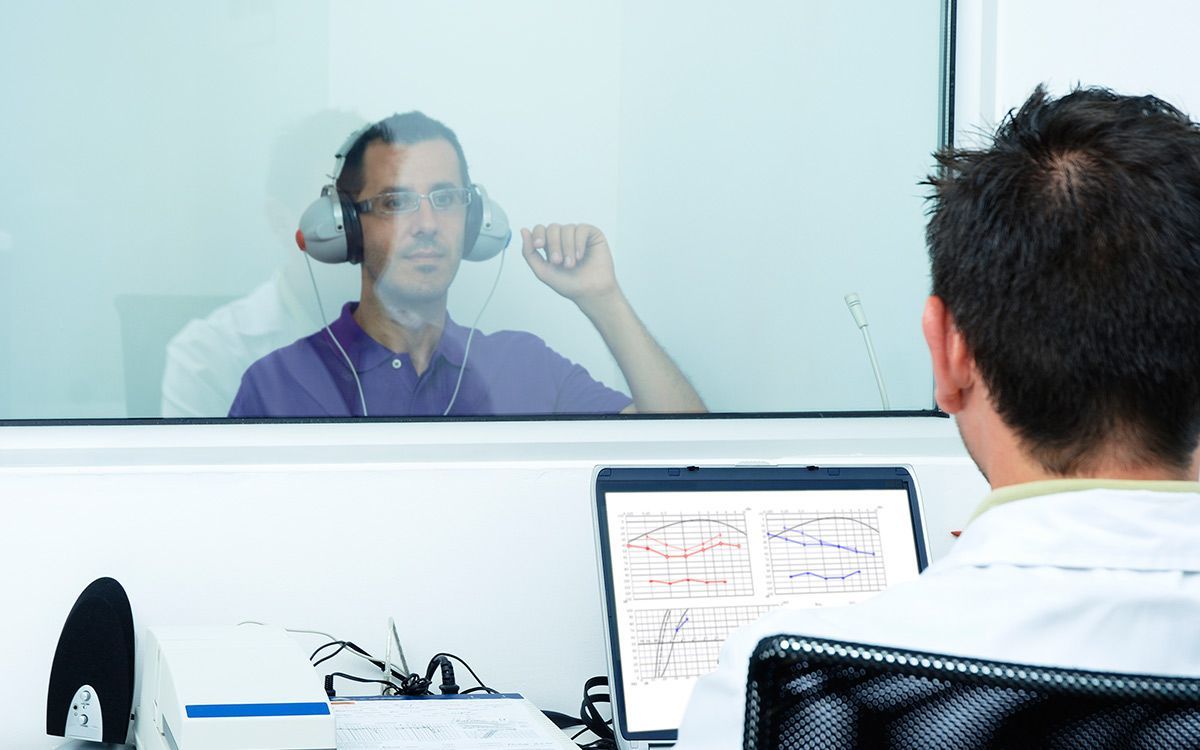The Use of Technology in Dealing With Hearing Loss

Do you know what a cyborg is? If your mind gets swept up in science fiction movies, you probably think of cyborgs as sort of half-human, half machine characters (these characters are usually cleverly utilized to touch on the human condition). You can get some really fantastic cyborgs in Hollywood.
But actually, somebody wearing something as simple as a pair of glasses could be viewed as a cyborg. The glasses, in fact, are a technology that has been integrated into biology.
These technologies usually enhance the human experience. Which means, if you’re using an assistive listening device, like a hearing aid, you’re the coolest kind of cyborg in the world. And the best thing is that the technology doesn’t stop there.
Disadvantages of hearing loss
There are absolutely some drawbacks that come with hearing loss.
It’s hard to follow the plot when you go see a movie. It’s even more challenging to make out what your grandkids are talking about (part of this is because you have no clue what K-pop is, and you never will, but mostly it’s the result of hearing loss). And this can affect your life in extremely profound (often negative) ways.
Left untreated, the world can become pretty quiet. That’s where technology plays a role.
How can hearing loss be managed with technology?
Generally speaking, technology that helps you have better hearing is lumped into the category of “assistive listening devices”. Ok, it does sound a bit technical! The question may arise: exactly what are assistive listening devices? Is there somewhere I can go and buy one of these devices? Are there challenges to using assistive listening devices?
Those are all fair questions!
Mostly, we’re used to thinking of technology for hearing loss in a very monolithic way: hearing aids. That’s logical, as hearing aids are a vital part of treating hearing loss. But they’re also just the beginning, there are numerous types of assistive hearing devices. And you will be able to enjoy the world around you more when you properly utilize these devices.
What are the different types of assistive listening devices?
Induction loops
Induction loops, also known as hearing loops, utilize technology that sounds quite complex. Here are the basics: areas with hearing loops are typically well marked with signage and they can help people with hearing aids hear more clearly, even in noisy areas.
A speaker will sound more clear due to the magnetic fields in a hearing loop. Here are some examples of when an induction loop can be beneficial:
- Locations with inferior acoustic qualities like echoes.
- Venues that tend to be noisy (including waiting rooms or hotel lobbies).
- Presentations, movies, or other events that depend on amplification.
FM systems
These FM systems are like a walkie-talkie or radio. A transmitter, usually a speaker or microphone, and a receiver, like a hearing aid, are required for this kind of system to work. Here are a few scenarios where an FM system will be helpful:
- Civil and governmental locations (for instance, in courtrooms).
- Education environments, including classrooms or conferences.
- Anywhere that is loud and noisy, especially where that noise makes it difficult to hear.
- Anybody who wants to listen to sound systems that use amplification (this includes things like a speaker during a presentation or dialogue during a movie).
Infrared systems
An infrared system is a lot like an FM system. It consists of a receiver and an amplifier. Typically, the receiver is worn around the neck with an IR system. Here are some examples where IR systems can be useful:
- People who wear hearing aids or cochlear implants.
- When you’re listening to one main person speaking.
- Indoor environments. Bright sunlight can interfere with the signals from an IR system. So this kind of technology works best in indoor settings.
Personal amplifiers
Personal amplifiers are like less specialized and less powerful versions of a hearing aid. They’re generally composed of a microphone and a speaker. The microphone detects sounds and amplifies them through a speaker. Personal amplifiers may seem like a tricky option since they come in several styles and types.
- For best outcomes, talk to us before using personal amplifiers of any type.
- You need to be careful, though, these devices can expedite the decline of your hearing, particularly if you aren’t careful. (You’re basically putting a super loud speaker right in your ear, after all.)
- For people who only require amplification in certain circumstances or have very slight hearing loss, these devices would be a practical option.
Amplified phones
Phones and hearing aids don’t always get along very well. Sometimes there’s feedback, sometimes things get a bit garbled, sometimes you can’t have a hard time getting the volume quite right.
One solution for this is an amplified phone. Depending on the situation, these phones allow you to control the volume of the speaker. These devices are good for:
- When numerous people in a home use a single phone.
- When someone has trouble hearing phone conversations but hears okay in other situations.
- People who don’t use Bluetooth enabled devices, like their phone or their hearing aid.
Alerting devices
When something is going on, these devices (sometimes called signalers or notification devices) use loud noises, vibrations, and blinking lights to get your attention. For example, when the doorbell dings, the phone rings, or the microwave bings. This means even if you aren’t using your hearing aids, you’ll still be aware when something around your home or office needs your consideration.
Alerting devices are an excellent solution for:
- Circumstances where lack of attention could be hazardous (for example, when a smoke alarm goes off).
- People with total or near total hearing loss.
- When you take breaks from your hearing aids.
- Home and office settings.
Telecoils
So the link (sometimes discouraging) between your hearing aid and phone becomes evident. When you hold a speaker up to another speaker, it causes feedback (sometimes painful feedback). This is essentially what happens when you put a phone speaker close to a hearing aid.
A telecoil is a way to get around that connection. It will link up your hearing aid to your phone directly, so you can listen to all of your conversations without noise or feedback. They’re great for:
- Anybody who isn’t connected to Bluetooth in any way.
- People who talk on the phone often.
- Anyone who uses hearing aids.
Captioning
Closed captions (and subtitles more broadly) have become a mainstay of the way people enjoy media today. You will find captions pretty much everywhere! Why? Because they make it a little easier to understand what you’re watching.
When you’re dealing with hearing loss, captions can work in combination with your hearing aids, helping you understand mumbled dialogue or ensuring you can hear your favorite show even when there’s distracting conversation near you.
What are the advantages of using assistive listening devices?
So where can you buy assistive listening devices? This question implies a recognition of the advantages of these technologies for people who use hearing aids.
Obviously, every individual won’t get the benefit of every type of technology. If you have a cell phone with easy-to-use volume control, you may not need an amplifying phone, for example. If you don’t have the right type of hearing aid, a telecoil might be useless to you.
The point is that you have choices. After you start customizing your journey toward being an awesome cyborg, you will be ready to get the most out of your life. It’s time to get back into that conversation with your grandchildren.
Some situations will call for assistive listening technology and others won’t. Call us as soon as possible so we can help you hear better!


